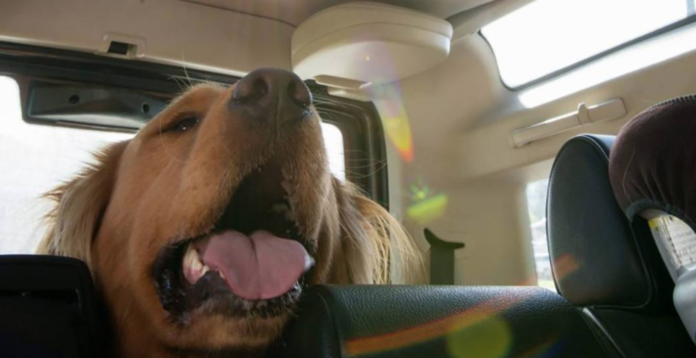Do we sound like a broken record?
It’s because no matter how many times authorities warn people to not leave their pets in the car on hot summer days, there will inevitably be some who still do.
Less than halfway into the summer season in 2018, the BC SCPA received more than 460 calls about dogs in distress after being left in hot cars across the province.
What happens when a dog is left in a hot car
Dogs can only cool off by sweating from their nose and paws. When they’re stuck inside a car surrounded by hot seats and other equally warm objects, it makes it even more difficult for them to release any sweat at all.
With an average body temperature of 39°C, a short time in a hot environment can quickly raise their temperature to 41°C which can potentially lead to the risk of brain damage and even death.
And it doesn’t help to leave the A/C running, so even cars that have signs like “the A/C is on. He has water and is listening to his favourite music” still pose a risk to the animal inside them.
https://twitter.com/fioses/status/736410564793110528
According to BC SPCA senior animal protection officer Eileen Drever, “an animal can still end up at risk if the air conditioning stops working, and that’s why we don’t recommend owners and guardians do it as the consequences can be dire. At the end of the day it’s best to simply leave your dog at home where there’s more space, water, and shade.”
When you see an animal left in a car by themselves, check for symptoms of heat stroke. These include exaggerated panting (or the sudden stopping of panting), rapid or erratic pulse, salivation, anxious or staring expression, weakness and muscle tremors, lack of coordination, convulsions or vomiting, and collapse.
Situations where you can move the animal out of the vehicle
If you’re able to safely and legally move the animal out of the vehicle, here’s what to do next:
- Move the animal to a cool, shady place.
- Wet the animal with cool water. Do not apply ice as this will constrict blood flow and discourage cooling.
- Fan the animal to promote evaporation. This cools the blood, helping to reduce the animal’s core temperature.
- Allow the animal to drink some cool water (or to lick ice cream if no water is available).
- Take the dog to a veterinarian as soon as possible for further treatment.
What to do if you can’t move the animal out of the vehicle
If the vehicle is parked, note down the license plate, colour, make and model, and get the managers of a nearby business to try and page the owner to return to their car right away.
If that fails call your local animal control agency, police, RCMP or the BC SPCA hotline at 1-855-622-7722 as soon as possible for assistance.
And if a window has been cracked open, the BC SPCA recommends trying to give water to the pet, or use a “battery-powered fan from a dollar store” to circulate air.
Don’t break the window because…
For a lot of people who mean well, their first instinct is to break the glass window to get the dog out of the car. Besides the fact that only RCMP, local police and BC SPCA Special Constables are legally allowed to enter a vehicle in that manner, you breaking a glass window might just make things worse.
“Glass shards strewn along the seat of the vehicle can lead to pieces in paws and fur, and could end up cutting the animal in the process,” says Drever. So you risk harming yourself (physically and legally), and could also be putting the animal in further danger of injury.



